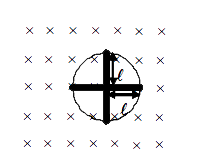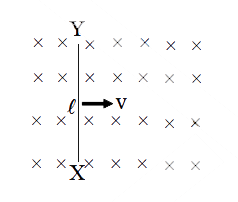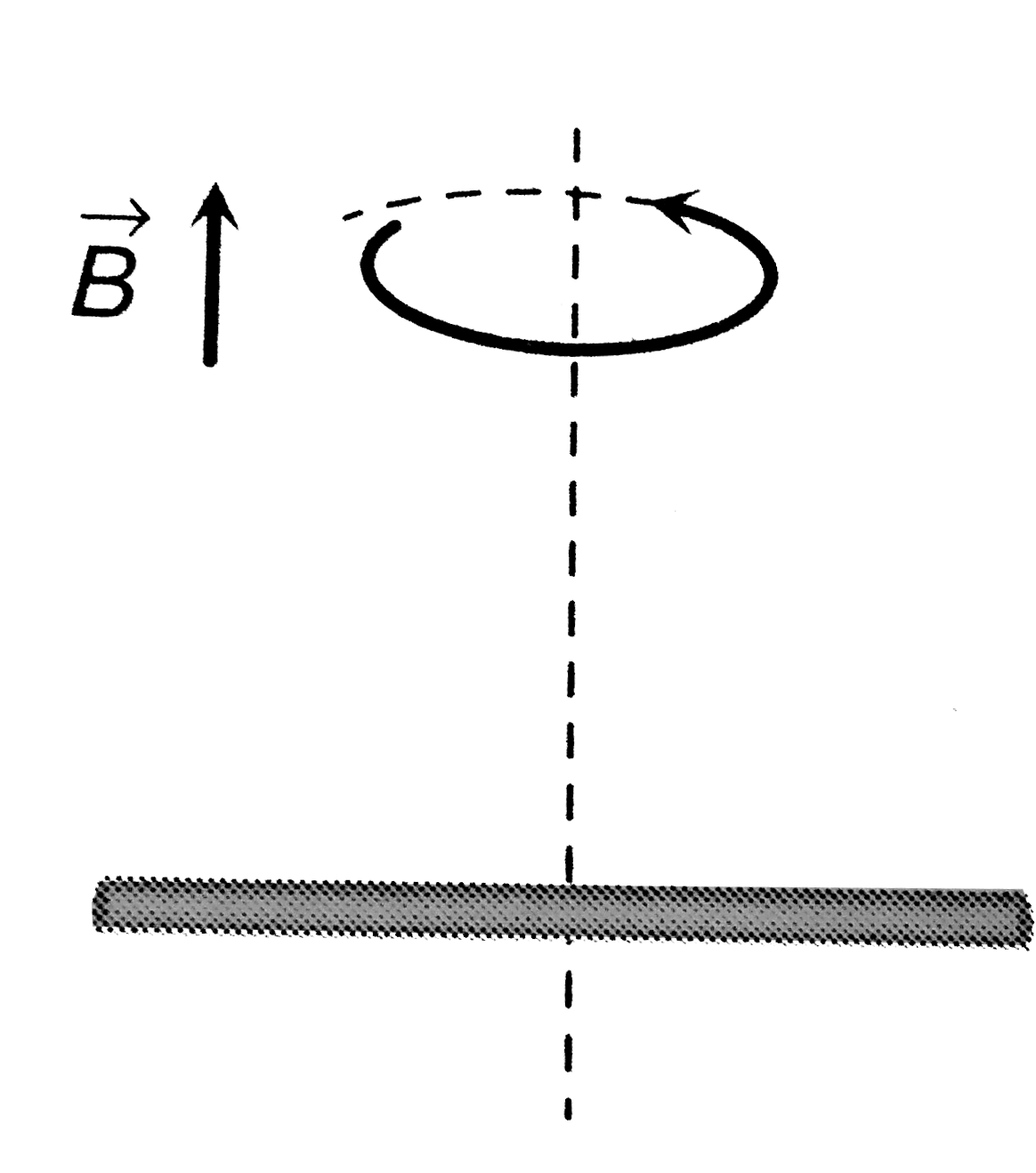A conducing rod of length l is falling with a velocity v perpendicular to a unifrorm horizontal magnetic field B . The potential difference between its two ends will be
2Blv
Blv
0.5Blv
B2l2v2
The correct Answer is:B
NA
Topper's Solved these Questions
Similar Questions
A conducting wheel in which there are four rods of length 25 cm as shown in the figure is rotating with constant velocity 20 rad/s in a uniform magnetic field 8 T . The induced potential difference between its centre and rim will be
 View Solution
View SolutionA metal rod of length 2 m is rotating with an angualr velocity of 100rads−1 in plane perpendicular to a uniform magnetic field of 0.3 T. The potential difference between the ends of the rod is
View Solution
Knowledge Check
- Question 1 - Select One
A conducting rod of length l is falling with a velocity v perpendicular to a uniform horizontal magnetic field B. The potential difference between the two ends will be
A2 BlvBBlvC12BlvD12Bl2v2 - Question 2 - Select One
A conducting wheel in which there are four rods of length l is rotating with angular velocity ω in a uniform magnetic field B . The induced potential difference between its centre and rim will be __
 A0BBl2ωCB2lωDBl2ω2
A0BBl2ωCB2lωDBl2ω2 - Question 3 - Select One
A metal rod of length 2m is rotating with an angular velocity of 100rad/sec in a plane perpendicular to a uniform magnetic field of 0.3T. The potential difference between the ends of the rod is
A30VB40VC60VD600V
A conducting wheel in which there are four rods of lengthe l as shown in figure is rotating with angular velocity ω in a uniform magnetic field B. The induced potential difference between its centre and rim will be
 View Solution
View SolutionA small conducting rod of length l, moves with a uniform velocity v in a uniform magnetic field B as shown in fig __
 View Solution
View SolutionA copper rod of length l is rotated about one end perpendicular to the uniform magnetic field B with constant angular velocity ω . The induced e.m.f. between its two ends is
View SolutionA rod of length l rotates with a uniform angular velocity omega about its perpendicular bisector. A uniform magnetic field B exists parallel to the axis of rotation. The potential difference between the two ends of the rod is
View SolutionA conducting rod of length 2l is rotating with constant angular speed w about its perpendicular bisector. A uniform magnetic field B exists parallel to the axis of rotation. The e.m.f. induced between two ends of the rod is
 View Solution
View Solution

